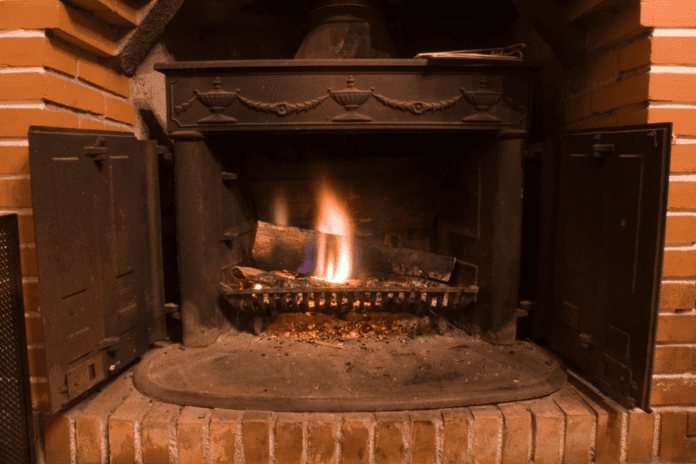A well-maintained chimney and fireplace not only keep your home cozy but also ensure safety. Many homeowners aren’t sure how often these areas need servicing. Neglecting issues with a chimney pipe, for example, can lead to poor ventilation, dangerous creosote buildup, or even fire hazards. Regular maintenance keeps your fireplace running smoothly and gives you peace of mind. So, let’s break down how often you should service your chimney and fireplace and what to expect in the process.
Why Regular Chimney Service Matters?
Your chimney is an essential part of your fireplace system. It directs smoke, gases, and other byproducts safely out of your home. Over time, though, soot, creosote, and debris can build up in your chimney. Creosote, a byproduct of burning wood, is especially dangerous. When it accumulates, it becomes highly flammable, increasing the risk of chimney fires. Regular cleaning reduces this risk and ensures that your fireplace burns efficiently and safely.
Without proper service, your chimney can also become blocked. Debris, like leaves, animal nests, or broken masonry, can clog the chimney. This can result in smoke backing up into your home or carbon monoxide buildup—both serious health hazards.
How Often to Clean Your Chimney?
Chimneys, fireplaces, and vents should be inspected at least once a year, according to the National Fire Protection Association (NFPA). An annual inspection helps identify creosote buildup, obstructions, or structural issues.
As a general rule:
- Wood-burning fireplaces: Clean once a year. Even if you don’t use your wood-burning fireplace often, it’s wise to have it inspected annually. Creosote can build up quickly in these types of fireplaces, and this regular service ensures everything is safe and sound.
- Gas fireplaces: Inspect once a year. Gas fireplaces don’t produce as much soot or creosote as wood-burning ones, but an annual checkup is still important. Technicians can examine the burners, pilot light, and venting system to make sure everything functions safely.
If you use your fireplace heavily throughout the winter, you may need to clean it more than once a year. For example, if you burn a fire three or more times a week during the colder months, consider two cleanings per year.
When to Schedule a Chimney Inspection?
Ideally, schedule your chimney inspection and cleaning in the late summer or early fall. This way, your chimney is ready for use when the colder months arrive, and you’ll have plenty of time to address any issues if repairs are needed. Late summer is also less busy for chimney professionals, so you’re more likely to get an appointment that works for your schedule.
In some cases, you might notice signs that indicate a more immediate inspection or cleaning is necessary:
- Strong odors coming from the fireplace, especially in warmer months, can indicate creosote buildup.
- Smoke filling the room when you light a fire is often a sign of a blocked or dirty chimney.
- Cracks or loose bricks around the chimney indicate possible structural damage and should be addressed quickly.
What to Expect During a Chimney Service?
During a typical chimney service, a professional chimney sweep will inspect and clean the interior of the chimney. This process involves using special brushes and tools to remove soot and creosote. For wood-burning fireplaces, technicians will clear away built-up creosote, while gas fireplace inspections focus on checking the vents, burners, and pilot light.
Some technicians also offer video inspections, which allow them to get a closer look at any potential cracks or obstructions inside the chimney. If they find any structural issues, they may recommend repairs, which can include relining the chimney, fixing cracks, or repairing damaged masonry.
DIY or Professional Chimney Cleaning?
Some homeowners might consider cleaning their chimneys themselves, but hiring a professional is usually safer and more effective. Chimney sweeps have the right tools and experience to thoroughly clean and inspect your chimney. They can reach areas that are difficult to access and identify problems that might not be visible to the untrained eye.
However, there are simple steps you can take to help maintain your chimney in between professional services:
- Burn only seasoned wood if you have a wood-burning fireplace. Green or wet wood produces more creosote.
- Install a chimney cap to prevent leaves, debris, and animals from entering.
- Check your chimney for obstructions regularly, especially if you notice unusual odors or smoke buildup in your home.
Final Thoughts
A little care and regular maintenance can make a huge difference in the lifespan and safety of your chimney and fireplace. Remember to schedule an annual inspection, and if you use your fireplace frequently, consider more frequent cleanings. So mark your calendar, call a chimney professional, and enjoy the warmth of a well-cared-for fireplace all season long!





